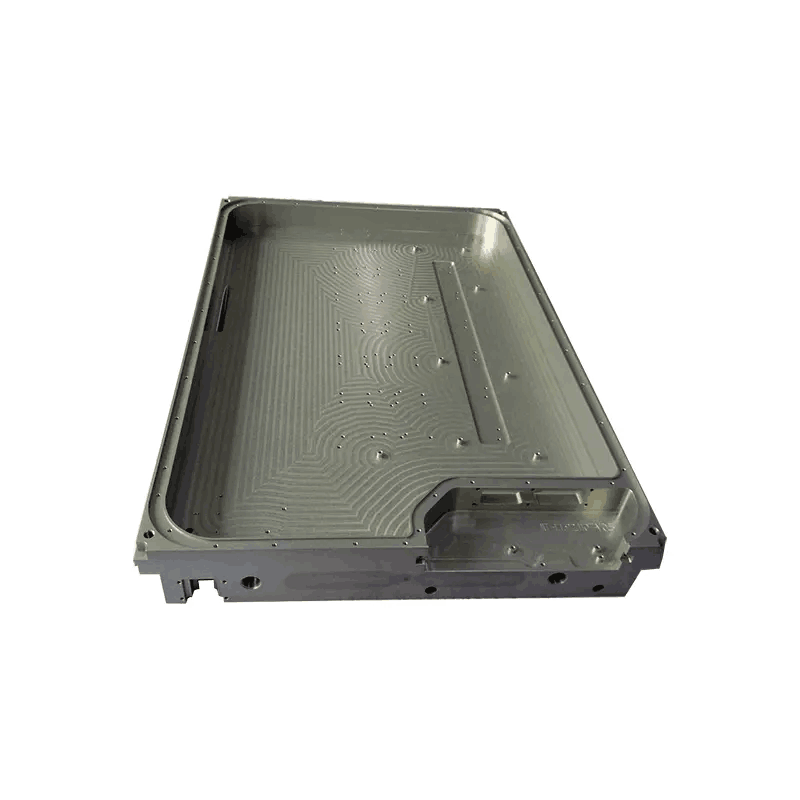Lightweighting is a trend where aluminum, magnesium, zinc, and other light alloys are gradually replacing steel as the primary materials in industries such as automotive and rail transport. Particularly, aluminum is increasingly being developed and applied in the automotive industry.
New materials and structures require new welding technologies. Traditional fusion welding methods encounter a series of issues when applied to new high-strength aluminum alloys, magnesium alloys, and other light alloy materials, such as alloy element burning and reduced mechanical properties during fusion welding, generation of weld defects and structural reliability damage, residual stress, and deformation in joints. Friction stir welding (FSW), as a new solid-state (non-melting) welding method, meets the welding requirements of these new materials, thus experiencing rapid development and application in the field of lightweight alloy welding.
Friction stir welding (FSW) is an advanced solid-phase welding technology that generates heat through high-speed rotation of a stirring tool, causing friction. This friction plasticizes the material in a non-molten state, and under the action of the stirring pin, it undergoes extrusion and forging, ultimately producing a fine forged joint structure. Because the process does not involve a "melting-solidification" cycle, the weld structure in friction stir welding does not exhibit common welding defects such as hot cracks, liquation cracks, or hydrogen pores; weld strength can reach up to 85% of the base material.
Extensive application of friction stir welding in the automotive manufacturing sector
Currently, friction stir welding technology has been widely applied in the automotive manufacturing sector, mainly in the following two aspects:
1. Direct use of friction stir welding technology in the manufacturing of automotive parts, such as motors, battery trays, drive housings, electric vehicle chassis components, ECU radiators, etc.;
2. Extension of friction stir welding technology for manufacturing automotive parts, such as friction stir spot welding for welding car doors, and retracting friction stir welding for hub manufacturing.
Why do new energy vehicle manufacturers favor friction stir welding?
When it comes to lightweight manufacturing in automobiles, the first thing that comes to mind for many people is new energy electric vehicles. Indeed, new energy vehicles are the primary users of friction stir welding technology. Why do new energy vehicle manufacturers particularly favor friction stir welding? Today, let's take the core "three-electric" products of friction stir welding as an example:
New energy vehicles differ from traditional vehicles primarily in their "three-electric" core technologies: electric motors, batteries, and electronic controls. Thermal management and protection are crucial for these core technologies. Therefore, most manufacturers use water cooling systems that integrate into the protective shells of "three-electric" components, such as water-cooled battery trays, water-cooled motor casings, and water-cooled electronic control box casings. Traditional fusion welding methods struggle to ensure air-tightness and are prone to deformation, whereas friction stir welding excels in welding water-cooled cavities. Here's why:
1. Excellent weld seam quality: Friction stir welding is a solid-phase welding process that does not require filler materials. The weld seam matches the base material, without common defects like hot cracks, liquation cracks, or hydrogen pores seen in traditional fusion welding processes. Moreover, the weld seam strength is high, which is uniquely advantageous for sealing high-pressure water-cooled products like these, making friction stir welding a standard for welding new energy "three-electric" products.
2. High welding efficiency: Friction stir welding is a simple, automated welding process that does not require filler materials. It is fast and efficient. For large-area, long-travel planar welding tasks like battery trays, friction stir welding offers exceptional efficiency, making it highly favored by new energy manufacturers.
3. Environmentally friendly: The entire welding process requires no welding materials and produces no high-intensity smoke or dust. It is environmentally friendly, with straightforward equipment operation, minimal requirements for factory operating environments, and low impact on the health of operators, making it popular among workers.
Lori's friction stir welding processing services
Lori provides customers with friction stir welding process machining, product sampling, new product trial production, OEM subcontracting for friction stir welding products, and professional testing services in areas such as new energy vehicle manufacturing, power electronics, rail transport, 5G communication, etc.
Lori has established two major workshops: a friction stir welding product processing center and a CNC machining center, equipped with over 10 sets of friction stir welding equipment such as five-axis, large, medium, and small static gantry, and C-type machines. It also possesses numerous high-precision CNC machining equipment including lathes, milling machines, drilling machines, and grinding machines, meeting the full range of industrial enterprise demands for friction stir welding product manufacturing and OEM requirements.
Currently, we have professional testing capabilities for friction stir welding products, including material composition analysis, mechanical performance analysis, product dimension testing, product performance testing, and specific tests such as air tightness testing, metallographic analysis, weld defect detection, and welding depth testing.
To meet customer demands for friction stir welding product processing, we have established project operation centers, production departments, assembly departments, quality inspection departments, and design departments, employing over 30 technical personnel and skilled workers with extensive practical experience in friction stir welding technology services, product structure design, fixture design, stirring head development, professional testing, product after-sales service, etc.
Based on our customer-centric service philosophy, Lori provides customers with a "one-stop" friction stir welding product support service, including custom welding fixture design, matching hydraulic station customization, stirring head customization, OEM services, and professional testing, ensuring comprehensive satisfaction and allowing customers to enjoy efficient and worry-free friction stir welding product services.







